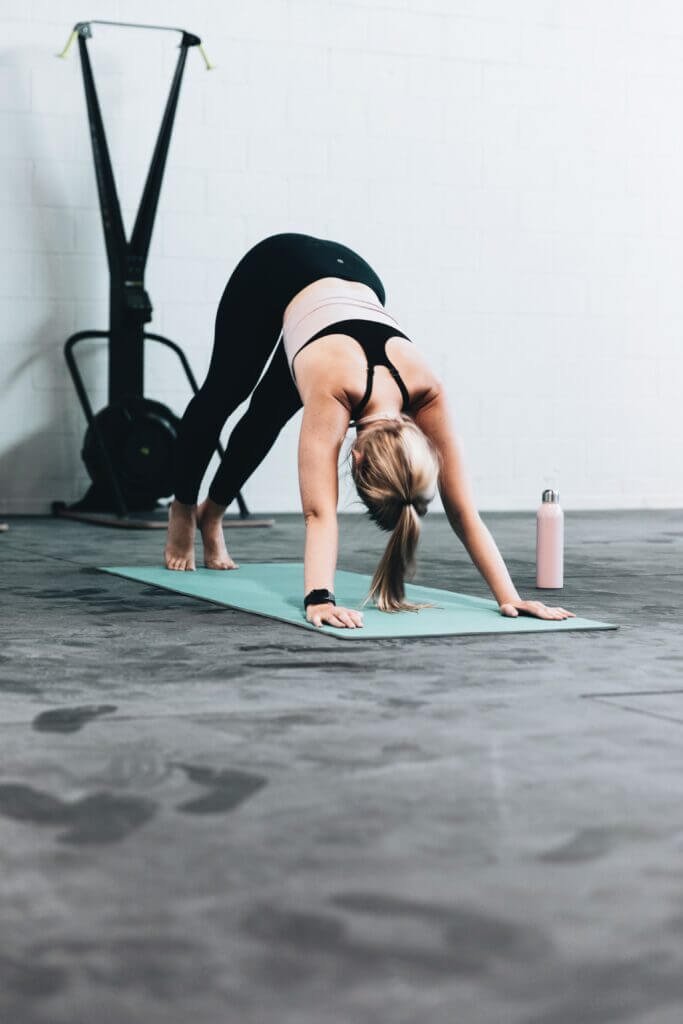Looking to stay fit and healthy after hitting the age of 50? Look no further! In this article, we will explore the best workouts specifically designed for women over 50. Whether you’re a seasoned fitness enthusiast or just starting your fitness journey, these workouts will help you improve your strength, flexibility, and overall well-being. Get ready to boost your energy levels, enhance your mood, and discover new workout routines that are perfect for women in their 50s and beyond. Let’s dive right in and find the best workouts for over 50 females!

Strength Training
Strength training is an essential component of any fitness routine, especially for women over 50. It involves using either your own body weight or external resistance to build and tone muscles. There are various types of strength training exercises that you can incorporate into your workout routine.
Types of Strength Training
Weightlifting: Using dumbbells, barbells, or resistance machines, weightlifting is a classic form of strength training. It targets specific muscle groups and helps improve strength, muscle tone, and bone density.
Bodyweight exercises: These exercises use your own body weight as resistance and include push-ups, squats, lunges, and planks. They are great for building strength and can be easily modified to suit different fitness levels.
Resistance band workouts: Resistance bands are versatile and lightweight tools that can be used to perform various strength training exercises. They are ideal for targeting both large and small muscle groups, increasing strength, and improving flexibility.
Benefits of Strength Training
Strength training offers numerous benefits for women over 50. Here are some of the key advantages:
Increased muscle tone: Strength training helps increase muscle mass and tone, giving you a more sculpted appearance.
Improved bone density: As we age, our bone density tends to decrease. Strength training exercises, such as weightlifting, can help slow down this process and reduce the risk of osteoporosis.
Enhanced metabolism: Building lean muscle through strength training boosts your metabolism, allowing you to burn more calories throughout the day.
Better joint health: Strength training strengthens the muscles around your joints, providing better support and reducing the risk of injuries.
Increased functional strength: Engaging in strength training helps improve your ability to perform daily tasks, such as carrying groceries or lifting items, with ease.
Sample Strength Training Exercises
Here are some sample strength training exercises that you can incorporate into your fitness routine:
Squats: Stand with your feet hip-width apart, and lower your body as if you are sitting back into a chair. Aim to bring your thighs parallel to the ground, then rise back up. Repeat for 10-15 repetitions.
Bicep curls: Hold a dumbbell in each hand with your arms by your sides. Bend your elbows and curl the weights towards your shoulders, then slowly lower them back down. Aim for 10-12 repetitions.
Plank: Begin in a push-up position, resting on your forearms. Keep your body in a straight line, engage your core, and hold for 30-60 seconds.
Remember to start with weights or resistance that challenges you but allows you to maintain proper form. Gradually increase the weight or resistance as you get stronger. Don’t forget to warm up before starting your strength training routine and cool down afterwards to prevent injury.
By incorporating strength training into your fitness regimen, you’ll experience improved muscle tone, increased bone density, and a stronger, healthier body.
Cardiovascular Exercises
Cardiovascular exercises, also known as cardio exercises, are an essential part of any fitness routine, no matter your age. These exercises increase your heart rate and get your blood pumping, improving cardiovascular health and boosting your overall fitness levels. Let’s explore some popular types of cardiovascular exercises and their benefits for women over 50.
Types of Cardiovascular Exercises
Brisk walking: Walking at a brisk pace is a low-impact cardiovascular exercise that can easily be incorporated into your daily routine. It improves heart health, burns calories, and can be enjoyed outdoors or on a treadmill.
Cycling: Whether you prefer outdoor cycling or indoor stationary biking, this exercise is great for cardiovascular fitness. Cycling targets the lower body muscles, increases endurance, and can be adjusted to various intensity levels.
Swimming: Swimming offers a full-body workout with minimal impact on the joints. It improves cardiovascular endurance, strengthens muscles, and can be particularly beneficial for those with joint pain or arthritis.
Benefits of Cardiovascular Exercises
Engaging in regular cardiovascular exercises can have numerous benefits for women over 50. Here are some key advantages:
Heart health: Cardiovascular exercises help strengthen your heart and lower the risk of heart disease and stroke.
Weight management: Regular cardio workouts, when combined with a balanced diet, can help maintain a healthy weight or aid in weight loss.
Improved mood: Cardio exercises release endorphins, which are natural mood boosters. They can help reduce stress, anxiety, and symptoms of depression.
Increased endurance: Regular cardio workouts gradually improve your stamina and endurance, allowing you to perform daily activities with less fatigue.
Lowered blood pressure: Cardio exercises promote healthy blood circulation and can help lower high blood pressure.
Sample Cardiovascular Exercises
Here are some sample cardiovascular exercises that can be tailored to suit your fitness level:
Interval training: Incorporate short bursts of high-intensity exercises like jumping jacks, mountain climbers, or high knees, followed by active recovery periods. Alternate between high and low intensity for 20-30 minutes.
Swimming laps: Spend 20-30 minutes swimming laps in a pool. Start with a comfortable pace and gradually increase intensity as your fitness improves.
Indoor cycling: Hop on a stationary bike and cycle for 30 minutes at a moderate intensity. Adjust the resistance to challenge yourself.
Remember to warm up before your cardio workout and cool down afterwards to prevent injury. Aim for at least 150 minutes of moderate-intensity cardio exercises per week, or 75 minutes of vigorous-intensity exercises for optimal health benefits.
By incorporating regular cardiovascular exercises into your fitness routine, you’ll improve your heart health, boost your endurance, and elevate your overall fitness level.
Yoga and Pilates
Yoga and Pilates have become increasingly popular among women over 50 for their numerous physical and mental health benefits. Both practices focus on flexibility, strength, and mindfulness, making them ideal for promoting overall well-being. In this section, we’ll explore the specific benefits of yoga and Pilates for women over 50 and provide some sample exercises to get you started.
Benefits of Yoga and Pilates for Women over 50
Improved flexibility: Both yoga and Pilates emphasize stretching and gentle movements, which can improve flexibility and range of motion. This is particularly beneficial for managing joint stiffness and reducing the risk of injury.
Increased strength: Although yoga and Pilates are primarily known for their emphasis on flexibility, they also help build strength. Holding poses or performing controlled movements engages muscles, leading to improved overall strength and stability.
Stress reduction: Both practices involve deep breathing techniques and mindful movements, promoting relaxation and reducing stress levels. This can have a positive impact on both mental and physical well-being.
Better balance: Yoga and Pilates exercises often require balance and coordination, helping improve stability and reducing the risk of falls, which can be more common as we age.
Sample Yoga and Pilates Exercises
Yoga: Tree pose: Stand tall with your feet hip-width apart. Shift your weight onto your left leg and slowly lift your right foot off the ground, placing the sole of the right foot against the inner left thigh or calf. Find your balance, keep your gaze forward, and bring your hands to your heart center. Hold for 30 seconds to one minute and repeat on the opposite side.
Pilates: The hundred: Lie on your back with your knees bent and feet flat on the floor. Lift your head, neck, and shoulders off the mat, reaching your arms long by your sides. Pump your arms up and down as you inhale for five counts and exhale for five counts, maintaining a neutral spine. Repeat for ten breaths, aiming to eventually reach 100 arm pumps.
Remember to listen to your body, modify exercises as needed, and always practice within your comfort zone. Yoga and Pilates can be beneficial when practiced regularly, allowing you to experience improved flexibility, strength, and a calmer state of mind.
Balance and Flexibility Exercises
Maintaining a good sense of balance and flexibility is crucial for women over 50. Balance exercises help prevent falls, while flexibility exercises improve range of motion and reduce muscle stiffness. In this section, we’ll explore the importance of incorporating balance and flexibility exercises into your fitness routine and provide some sample exercises to help get you started.
Importance of Balance and Flexibility Exercises
Fall prevention: As we age, the risk of falls increases due to factors such as muscle weakness and impaired balance. Balance exercises help improve stability, proprioception (awareness of body position), and coordination, reducing the risk of falls and related injuries.
Enhanced posture: Poor posture can worsen with age and lead to discomfort or pain. Practicing balance and flexibility exercises can help improve posture and alignment, resulting in better overall spinal health.
Improved mobility: Flexibility exercises help keep joints supple and muscles elongated, allowing for a wider range of motion. This is particularly beneficial for maintaining mobility as we age.
Sample Balance and Flexibility Exercises
Single-leg balance: Stand tall with your feet hip-width apart. Shift your weight onto one leg and lift the other leg slightly off the ground, either resting your foot on your calf or holding it in front of you. Engage your core and hold the position for 30 seconds to one minute. Repeat on the other leg.
Seated forward bend: Sit on the floor with your legs extended in front of you. Slowly hinge forward from your hips, keeping your spine long and reaching towards your toes. Only go as far as you’re comfortable, feeling a gentle stretch in the back of your legs. Hold for 30 seconds and gradually increase the duration over time.
Remember to practice these exercises in a safe environment, such as on a stable surface, and use any necessary support, such as a chair or wall, for added stability. Always listen to your body and avoid pushing yourself to the point of pain.
By incorporating balance and flexibility exercises into your fitness routine, you’ll help maintain your independence, reduce the risk of falls, and improve your overall mobility.

High-Intensity Interval Training (HIIT)
High-Intensity Interval Training (HIIT) has gained popularity in recent years due to its effectiveness in providing a quick and efficient workout. It involves short bursts of intense exercise followed by brief recovery periods. While HIIT is suitable for women over 50, modifications can be made to make it more appropriate for different fitness levels. Let’s explore the benefits of HIIT specifically for women over 50 and provide some sample exercises to consider.
Benefits of HIIT for Women over 50
Time efficiency: HIIT workouts are typically shorter in duration compared to traditional cardiovascular workouts while providing similar or even greater benefits. This makes them ideal for women over 50 who may have limited time but want to get the most out of their workouts.
Increased calorie burn: HIIT is known for its ability to maximize calorie burn during and even after the workout. This effect, known as the afterburn or excess post-exercise oxygen consumption (EPOC), can contribute to weight loss or weight management.
Improved cardiovascular health: HIIT challenges your cardiovascular system, improving its efficiency and endurance. Regular HIIT workouts can lead to a stronger heart, lower resting heart rate, and decreased risk of cardiovascular diseases.
Enhanced metabolic rate: HIIT stimulates the production of human growth hormone (HGH), which helps promote fat burning and muscle growth. As we age, HGH production naturally decreases, making HIIT a valuable tool for maintaining a healthy metabolism.
Sample HIIT Exercises
Squat jumps: Stand with your feet shoulder-width apart. Lower into a squat position, then explosively jump up, extending your arms overhead. Land softly and immediately lower back into a squat. Repeat for 20 seconds, followed by a 10-second rest. Repeat this sequence for a total of 4-5 minutes.
Mountain climbers: Begin in a push-up position with your hands directly under your shoulders. Alternate bringing your knees towards your chest, keeping your core engaged and your spine neutral. Perform the movement as quickly as possible for 20 seconds, then rest for 10 seconds. Repeat for a total of 4-5 minutes.
Remember to warm up before starting a HIIT workout and cool down afterwards to prevent injuries. As HIIT is intense, it’s always important to listen to your body and modify exercises as needed. If you’re new to HIIT, start with shorter intervals and gradually increase the intensity and duration.
By incorporating HIIT into your fitness routine, you can experience efficient calorie burn, improved cardiovascular health, and enhanced metabolic rate, all within a shorter time frame.
Low-Impact Exercises
Low-impact exercises are a suitable option for women over 50 who want to stay active while minimizing stress on their joints. These exercises are gentle on the body, making them ideal for individuals with joint pain, arthritis, or those recovering from injuries. In this section, we’ll explore different types of low-impact exercises and discuss their benefits for women over 50.
Types of Low-Impact Exercises
Elliptical training: Using an elliptical machine provides a low-impact, full-body workout. It simulates the natural motion of walking or running without placing excessive stress on the joints.
Swimming: Swimming is a highly recommended low-impact exercise as it provides a full-body workout while the water buoyancy reduces the impact on the joints.
Cycling: Whether it’s outdoor cycling or using a stationary bike indoors, cycling is a low-impact exercise that focuses on cardiovascular health and strengthens the lower body.
Benefits of Low-Impact Exercises
Here are some key benefits of incorporating low-impact exercises into your routine:
Joint-friendly: Low-impact exercises reduce the stress placed on your joints, making them ideal for individuals with joint pain, arthritis, or those recovering from injuries.
Reduced risk of injury: The gentle nature of low-impact exercises minimizes the risk of strains, sprains, and other injuries commonly associated with high-impact activities.
Improved cardiovascular health: Low-impact exercises can still provide an effective cardiovascular workout without putting excessive strain on the heart. Regular participation in these exercises can help improve heart health and overall fitness levels.
Enhanced muscle tone and strength: Although low-impact exercises may be gentler on the joints, they still provide an opportunity to strengthen and tone various muscle groups, helping to improve overall strength and stability.
Sample Low-Impact Exercises
Water aerobics: Join a water aerobics class or perform exercises in a pool. The water’s buoyancy reduces joint stress while providing resistance for muscle strengthening and cardiovascular benefits.
Stationary cycling: Use a stationary bike and adjust the resistance to suit your fitness level. Cycling is an excellent low-impact exercise that can be easily modified to your comfort.
Pilates: Pilates is a low-impact exercise that focuses on core strength, flexibility, and body awareness. Pilates can be practiced using mat exercises or specialized equipment, such as the Pilates reformer.
Remember to always warm up and cool down before and after low-impact exercises to prepare your body and prevent injury. Gradually increase the intensity and duration of your workouts as your fitness level improves.
By incorporating low-impact exercises into your fitness routine, you’ll be able to enjoy the numerous benefits of exercise while minimizing stress on your joints.

Water Aerobics
Water aerobics is a fantastic exercise option for women over 50. It provides a low-impact, full-body workout that can be enjoyable and refreshing. In this section, we’ll explore the benefits of water aerobics specifically for women over 50 and provide some sample exercises to try out.
Benefits of Water Aerobics for Women over 50
Low-impact exercise: The buoyancy of the water supports your body, making water aerobics an ideal low-impact exercise for individuals with joint pain or arthritis. This reduces stress on the joints while still providing an effective workout.
Cardiovascular conditioning: Water aerobics increases your heart rate, improving cardiovascular fitness and overall endurance. The water’s resistance challenges your muscles, making it a great option for a full-body workout.
Reduced risk of injuries: The water’s buoyancy significantly decreases the impact on your joints, bones, and muscles, reducing the risk of strains or injuries commonly associated with other forms of exercise.
Improved flexibility: Water provides a gentle resistance that encourages your muscles and joints to move through a wider range of motion. Regular water aerobics can enhance flexibility and maintain joint mobility.
Cooling effect: Exercising in water helps regulate body temperature, making it a refreshing choice, especially during hot summer months.
Sample Water Aerobics Exercises
Water walking or jogging: Walk or jog in waist-deep water, adjusting your speed to suit your fitness level. The water’s resistance provides a low-impact cardiovascular workout that engages multiple muscle groups.
Water squats: Stand with your back against the pool wall or hold onto the pool’s edge for stability. Lower into a squat position, keeping your knees in line with your toes and your core engaged. Push through your heels to return to a standing position. Perform 10-15 repetitions.
Leg kicks: Stand near the pool wall with your palms resting on the edge for support. Extend one leg forward, backward, or to the side, depending on the kick you’re performing. Alternate legs and repeat for 10-15 repetitions on each side.
Aqua jogging: Wear a flotation belt and perform a jogging motion in deep water. Continue for a set duration or distance, maintaining an upright posture and engaging your core.
Remember to listen to your body and modify the exercises according to your comfort and fitness level. You can adjust the intensity by altering your speed, range of motion, or using resistance equipment designed for water aerobics.
By including water aerobics in your fitness routine, you can enjoy a fun, refreshing, and joint-friendly exercise that offers cardiovascular conditioning, improved flexibility, and reduced risk of injuries.
Group Fitness Classes
Group fitness classes are a popular option for women over 50 who enjoy exercising in a supportive and motivating environment. Whether you prefer dancing, cycling, or strength training, there are numerous types of group fitness classes to suit your interests and fitness level. In this section, we’ll explore various types of group fitness classes, discuss their benefits, and provide some sample classes to consider.
Types of Group Fitness Classes
Zumba: Zumba combines dance and aerobic movements to upbeat music, creating a fun and energetic workout. It improves cardiovascular fitness, coordination, and can boost your mood.
Cycling classes: Indoor cycling classes, often called spin classes, involve riding stationary bikes and following an instructor’s guidance. These classes offer a challenging cardiovascular workout while being easy on the joints.
Strength training classes: Group strength training classes typically use weights, resistance bands, or bodyweight exercises to target specific muscle groups. These classes help improve strength, muscle tone, and overall fitness.
Yoga or Pilates classes: Joining a yoga or Pilates class can provide a great opportunity to improve flexibility, strength, and mindfulness, all while enjoying the camaraderie of exercising with others.
Benefits of Group Fitness Classes
Motivation and support: Exercising in a group setting can be highly motivating, as you’ll be surrounded by like-minded individuals working towards similar goals. The energy and support from fellow participants and instructors can push you to work harder and stay consistent.
Variety and structure: Group fitness classes often follow a structured format, taking the guesswork out of your workout routine. Instructors design classes with a variety of exercises to keep you engaged and challenge different muscle groups.
Improved accountability: Committing to a scheduled class time can help hold you accountable and keep you on track with your fitness goals. Knowing others are expecting to see you in class can be a strong motivator to show up and give it your best.
Social aspect: Group fitness classes offer a social environment where you can meet new people, make friends, and build a sense of community. This can make your fitness journey more enjoyable and fulfilling.
Sample Group Fitness Classes
Zumba: Join a Zumba class and dance your way to fitness while grooving to high-energy Latin and international music.
Cycling class: Try an indoor cycling class where you can pedal to the rhythm of motivating music while following the instructor’s cues.
Strength training class: Choose a group strength training class that incorporates dumbbells, resistance bands, and bodyweight exercises to build strength and muscle tone.
Yoga or Pilates class: Join a yoga or Pilates class to improve flexibility, strength, and mindful awareness. These classes often cater to different levels, so you can find one suitable for your needs.
Remember to inform the instructor of any specific considerations or modifications you may require. Stay hydrated, bring suitable workout attire, and arrive a few minutes early to set up and prepare yourself.
Joining group fitness classes can be a fantastic way to stay motivated, meet new people, and enjoy a varied and structured workout routine.

Stretching Exercises
Stretching is a vital component of any fitness routine, especially for women over 50. It helps maintain flexibility, prevent muscle imbalances, and reduce the risk of injuries. In this section, we’ll explore the benefits of stretching exercises specifically for women over 50 and provide some sample stretches to incorporate into your routine.
Benefits of Stretching Exercises for Women over 50
Improved flexibility: Regular stretching helps maintain or increase flexibility, allowing for a wider range of motion in your joints and muscles. This can enhance your overall mobility and prevent muscle stiffness and tightness.
Prevention of muscle imbalances: Stretching exercises can help correct muscle imbalances that occur naturally with age or due to repetitive movements. Addressing these imbalances reduces the risk of postural issues or discomfort.
Reduced risk of injuries: Stretching before and after exercise helps warm up your muscles and increase blood flow, reducing the risk of strains, sprains, or other injuries.
Enhanced relaxation and stress relief: Stretching exercises promote relaxation and can relieve muscle tension, helping reduce stress levels and promote a sense of calm.
Sample Stretching Exercises
Neck stretch: Gently tilt your head to the right, bringing your right ear towards your right shoulder. Hold for 15-30 seconds, feeling a stretch on the left side of your neck. Repeat on the other side.
Chest stretch: Stand tall and clasp your hands behind your back, gently squeezing your shoulder blades together. Slowly lift your arms away from your body, feeling a stretch in your chest and shoulders. Hold for 15-30 seconds.
Quad stretch: Standing near a wall or holding onto a chair for support, bend your left knee and reach back to grab your left foot with your left hand. Gently pull your foot towards your glutes, feeling a stretch in the front of your thigh. Hold for 15-30 seconds and repeat on the other side.
Hamstring stretch: Sit on the edge of a chair or the floor with your legs extended in front of you. Keeping your back straight, hinge forward at your hips, reaching towards your toes. Only go as far as you feel a gentle stretch in the back of your thighs. Hold for 15-30 seconds.
Remember to stretch all major muscle groups in your body, holding each stretch for 15-30 seconds without bouncing or forcing the movement. Stretching should never cause pain. If you have any specific conditions or concerns, consult with a healthcare professional or a certified trainer before starting a stretching routine.
By incorporating regular stretching exercises into your fitness routine, you’ll help improve flexibility, reduce the risk of injuries, and promote a greater sense of relaxation.
Outdoor Activities
Outdoor activities offer an excellent opportunity to stay fit, connect with nature, and enjoy the fresh air. Engaging in physical exercise outdoors provides numerous health benefits, both physically and mentally. In this section, we’ll explore the advantages of outdoor activities specifically for women over 50 and provide some sample activities to consider.
Benefits of Outdoor Activities for Women over 50
Improved vitamin D levels: Spending time outdoors exposes you to natural sunlight, which ensures adequate vitamin D production in your body. Vitamin D plays a crucial role in bone health, immune function, and overall well-being.
Enhanced mental well-being: Interacting with nature and spending time outdoors has been proven to reduce stress, anxiety, and depression. The calming effects of nature can positively impact your mood and mental outlook.
Increased physical activity: Many outdoor activities require physical effort, making them an enjoyable way to incorporate exercise into your routine. Whether it’s hiking, swimming, or gardening, outdoor activities engage your muscles and improve cardiovascular health.
Connection with nature: The beauty and tranquility of nature can provide a sense of peace, rejuvenation, and heightened appreciation for the world around us.
Sample Outdoor Activities
Hiking: Lace up your hiking boots and explore local trails. Hiking is a wonderful way to immerse yourself in nature, get a great cardiovascular workout, and engage in low-impact exercise while enjoying scenic views.
Cycling: Take your bike outdoors and experience the thrill of riding on scenic trails or through peaceful neighborhoods. Cycling provides excellent cardiovascular exercise and strengthens your lower body muscles.
Gardening: Embrace your green thumb and spend time tending to your garden. Gardening involves a range of physical activities, such as bending, lifting, and digging, that strengthen muscles and improve flexibility.
Outdoor yoga or Pilates: Take your yoga or Pilates practice outside and enjoy the peacefulness of nature while focusing on movement, breath, and mindfulness.
Remember to stay hydrated, protect your skin from the sun with sunscreen and appropriate clothing, and be mindful of your surroundings to ensure safety. Start with activities suitable for your fitness level and gradually increase intensity or duration as your strength and stamina improve.
By engaging in outdoor activities, you’ll reap the benefits of exercise, connect with nature, and promote both physical and mental well-being.
In conclusion, there are various workout options available for women over 50 that cater to different preferences and fitness levels. Strength training, cardiovascular exercises, yoga, Pilates, balance and flexibility exercises, HIIT, low-impact exercises, water aerobics, group fitness classes, stretching, and outdoor activities all offer unique advantages. It’s important to find a combination of exercises that you enjoy, listen to your body, and consult with a healthcare professional or certified trainer if you have any specific concerns or limitations. By prioritizing your fitness and making regular exercise a part of your lifestyle, you’ll experience improved strength, flexibility, cardiovascular health, and overall well-being. Remember, it’s never too late to start, and your journey to a stronger, healthier you begins today!



